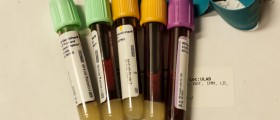
Benign monoclonal gammopathy (monoclonal gammopathy of undetermined significance) is a precancerous medical condition which may eventually develop into an actual malignant tumor called multiple myeloma. The condition predominantly affects people of 50 years of age and above. Benign monoclonal gammopathy is associated with the presence of an abnormal protein in the blood. It is a monoclonal protein called M protein. The reason why this protein occurs in the first place remains unknown.
Diagnosing Benign Monoclonal Gammopathy
Since the condition is asymptomatic it remains undiagnosed for some time. It can, however, be accidentally diagnosed in case an individual undergoes some routine blood tests or detailed medical examination because of some other health issues. In some cases people suffering from benign monoclonal gammopathy may have symptoms like numbness, tingling sensation or skin lesions. Unfortunately, these are not disease-specific and usually require further evaluation.
The final diagnosis can be confirmed after a series of tests and exams. Firstly, there are blood tests. Abnormal M protein can be easily confirmed in the blood with the assistance of a serum protein electrophoresis. After this test, the person undergoes several more specialized tests (e.g. immunofixation, the free light chain assay etc.) which further help identifying the particular protein.
Urine test can confirm the presence of the abnormal protein and determine whether there is any damage to kidneys.
Bone marrow biopsy is what needs to be performed once the presence of the abnormal protein in the blood has been confirmed. Namely, bone marrow biopsy determines the specific molecular type of monoclonal gammopathy.
Benign Monoclonal Gammopathy Treatment
Once the condition is confirmed patients do not have to worry much because they will not receive any treatment. They may continue to live their lives normally. The condition per se is not harmful although some types may eventually progress into a malignant disease (multiple myeloma).
It is estimated that around 20% of all individuals suffering from benign monoclonal gammopathy end up with multiple myeloma. Because of that such patients require long-term monitoring and regular check-ups. This way, even if multiple myeloma develops, it can be diagnosed on time (in early stage) and treated timely. Routine examinations and blood tests are performed every six months.
Up until now, there has been no evidence that family members of an individual suffering from benign monoclonal gammopathy are at any risk of developing the condition themselves. Therefore, there is no need for them to be tested for the presence of the abnormal M protein.

















Your thoughts on this
Loading...